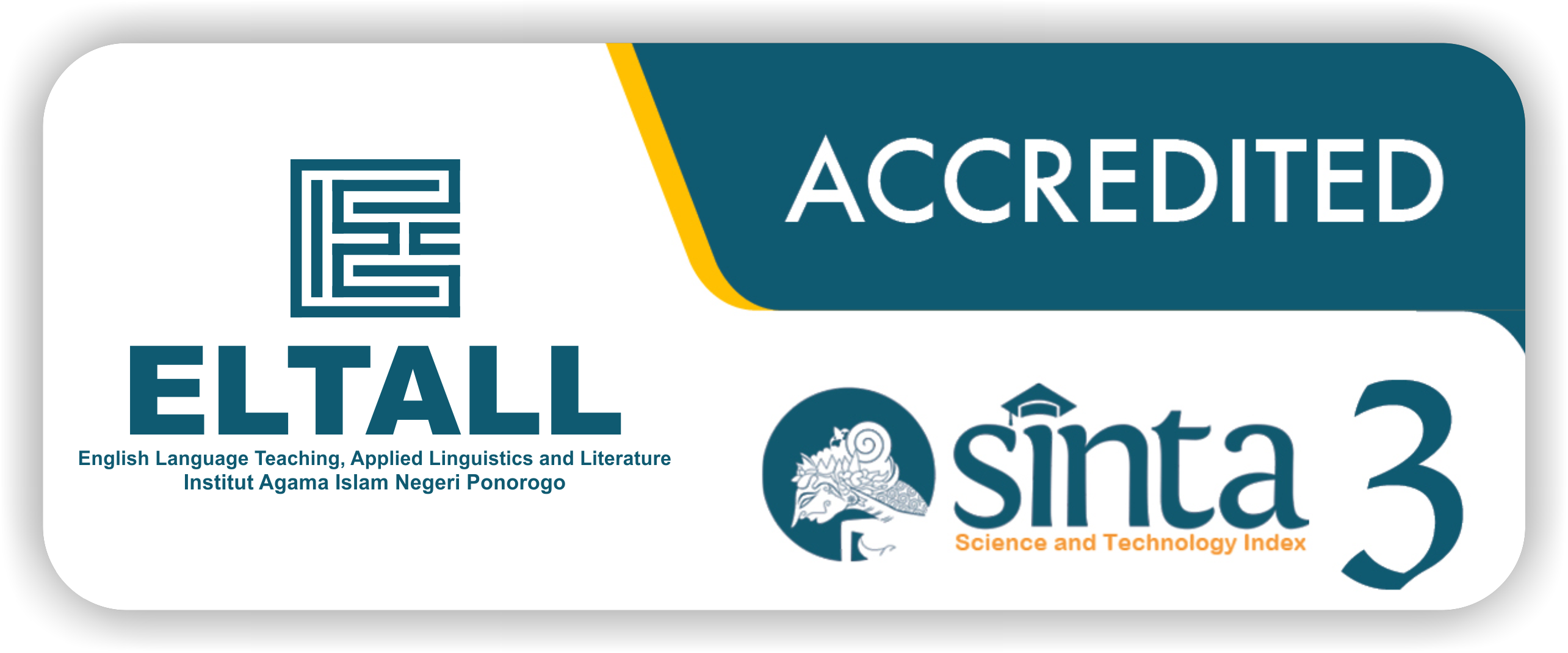Textbook Analysis of "Grow with English Book 1"
DOI:
https://doi.org/10.21154/eltall.v4i1.5714Keywords:
Textbook analysis, Grow with English, Teaching English to Young LearnersAbstract
Textbooks play an important role in teaching and learning. Hence, textbooks are required to meet the standard. The purpose of this study is to find out whether the book "Grow with English book 1" is appropriate to be used as teaching material. Content analysis was conducted by using the standard criteria from Badan Standar Nasional Pendidikan or National Education Standards Agency as well as the criteria of Cunningsworth (1995)'s theory. It was found the book met all the criteria, i.e. material, language, material presentation, and graphical aspects. It can be concluded that the book is suitable to be used in English classroom at elementary school level.
References
Apriyani, L. A., & Robiasih, R. H. (2019). Eight grade text book evaluation by
Cunningsworth’ s theory. Journal of English Language and Pedagogy, 2(2), 94-103.
Ariebowo, T. (2017). The Evaluation of The Seventh-Grade English Textbook
When English Rings The Bell: A Survey Research (Doctoral dissertation, SANATA DHARMA UNIVERSITY).
Bhowmik, S. K., Nolasco, R., Arthur, L., Rowland, L., Barrs, K., Charalambous, C. Y., & Quarterly, T. (2014). Textbook evaluation and ELT management: A south Korean case study. Asian EFL journal. ELT Journal. https://doi. org/10.1017/CBO9781107415324, 4.
Cunningsworth, A. (1995). Choosing your coursebook. Macmillan.
Garinger, D. (2001). Textbook evaluation. TEFL Web Journal, 1(1), 231-45.
Mumtaz, I. (2020). A Content Analysis of “When English Rings a Bell”: An English Textbook for Seventh Grade (Ed. 2017) (Doctoral dissertation, IAIN Ponorogo).
Puspitasari, D. (2021). Blended Learning Environment: Promoting Learners’
Self-Efficacy. ELTALL: English Language Teaching, Applied Linguistic and Literature, 2(1), 39.
Downloads
Published
Issue
Section
License
All articles published in ELTALL (English Language Teaching, Applied Linguistics, and Literature Journal) are licensed under the Creative Commons Attribution-NonCommercial 4.0 International License (CC BY-NC 4.0).
Under this license, authors and readers are free to:
- Share. copy and redistribute the material in any medium or format
- Adapt. remix, transform, and build upon the material
Under the following terms:
- Attribution. You must give appropriate credit, provide a link to the license, and indicate if changes were made. You may do so in any reasonable manner but not in any way that suggests the licensor endorses you or your use.
- Non-Commercial. You may not use the material for commercial purposes.
Notices:
- The licensor cannot revoke these freedoms as long as you follow the license terms.
- No additional restrictions. You may not apply legal terms or technological measures that legally restrict others from doing anything the license permits.
For the full legal code of the license, please visit: https://creativecommons.org/licenses/by-nc/4.0/













